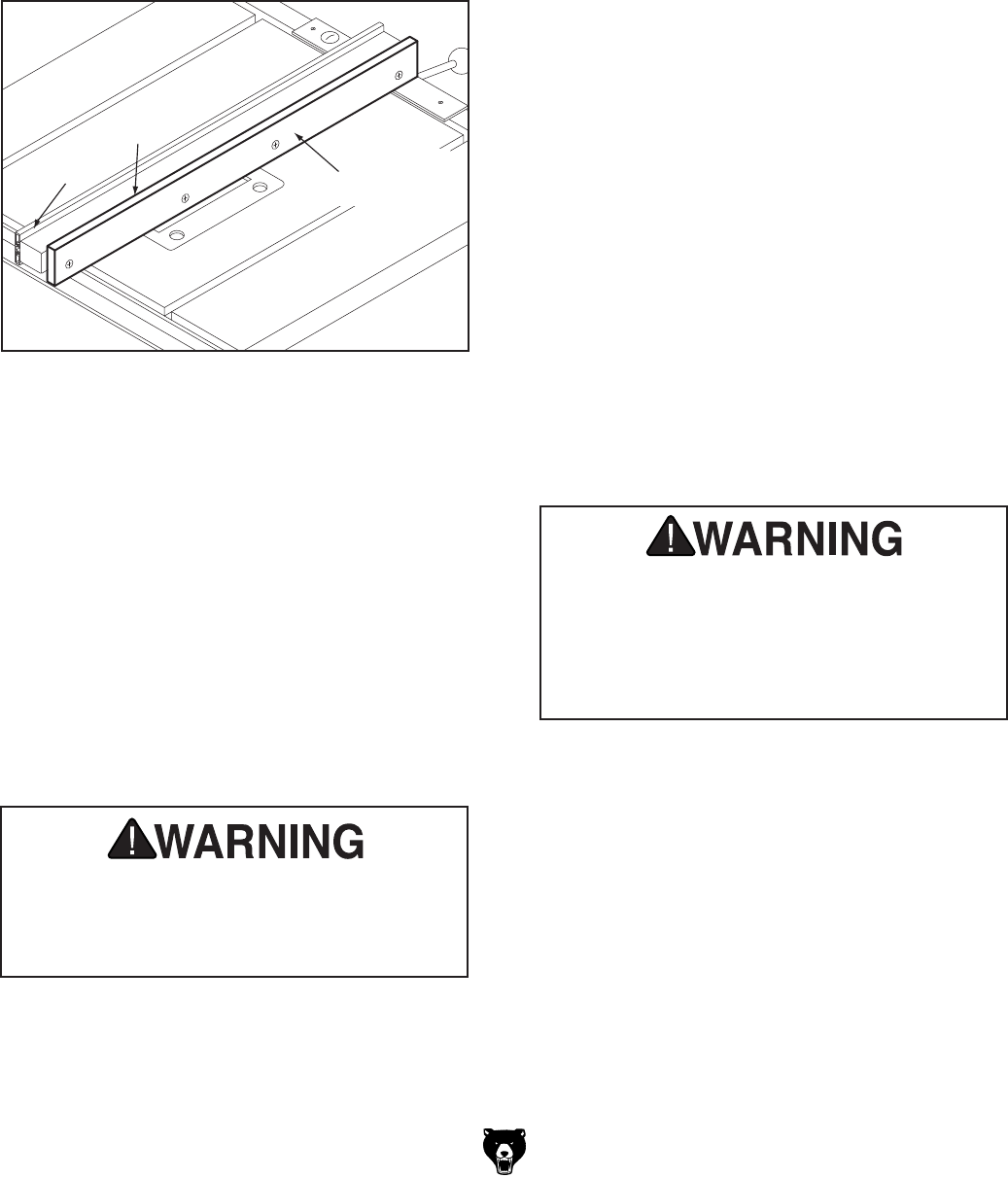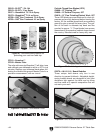
G0605X/G0606X Extreme Series 12" Table Saw
-41-
3. Pull an end cap off of the standard fence,
then remove four hex nuts, flat washers, hex
bolts and one side of the fence facing from
the fence body.
4. Thread the flat head screws through the
auxiliary fence and into the hex nuts in the
standard fence body, and tighten securely as
shown in
Figure 56.
Figure 56. Auxiliary fence.
Resawing Operations
The table saw motor is pushed to its limits when
resawing. If the motor starts to bog down, slow
down your feed rate. Motor overloading and blade
wear can be reduced by using a ripping blade.
Ripping blades are designed to clear the sawdust
quickly.
Components Needed for Resawing:
Zero Clearance Insert .........................................1
Ripping Blade 12" ...............................................1
Clamps ...............................................................2
Shop Made Auxiliary Fence ...............................1
Shop Made Resaw Barrier .................................
1
You may experie
nce kickback during this
procedure. Stand to the side of the blade
and wear a full face shield to prevent injury
when resawing.
To perform resawing operations:
1. DISCONNECT THE SAW FROM POWER!
2. Remove the standard table insert and the
blade guard/splitter, and install the riving
knife. Install a ripping blade and a zero clear-
ance table insert. Then lower the blade below
the table surface.
3. Attach the auxiliary fence to the standard
fence and set it to the desired width.
Note: Account for blade kerf, the rough cut
made by the blade, and the inaccuracy of
the fence scale when the auxiliary fence is
installed when figuring out the correct width.
4. Place the workpiece against the fence and
slide the resaw barrier against the workpiece.
Now clamp the resaw barrier to the top of the
table saw
(see Figure 57).
5. Slide the workpiece over the blade to make
sure it moves smoothly.
6. Raise the blade approximately an inch, or
close to half the height of the workpiece
(Figure 57), whichever is less.
The danger of kickback increases relative to
the depth of a cut. Reduce the risk of kick
-
back by making multiple passes to achieve
the desired depth of cut. Failure to follow
these warnings could result in serious per
-
sonal injury.


















